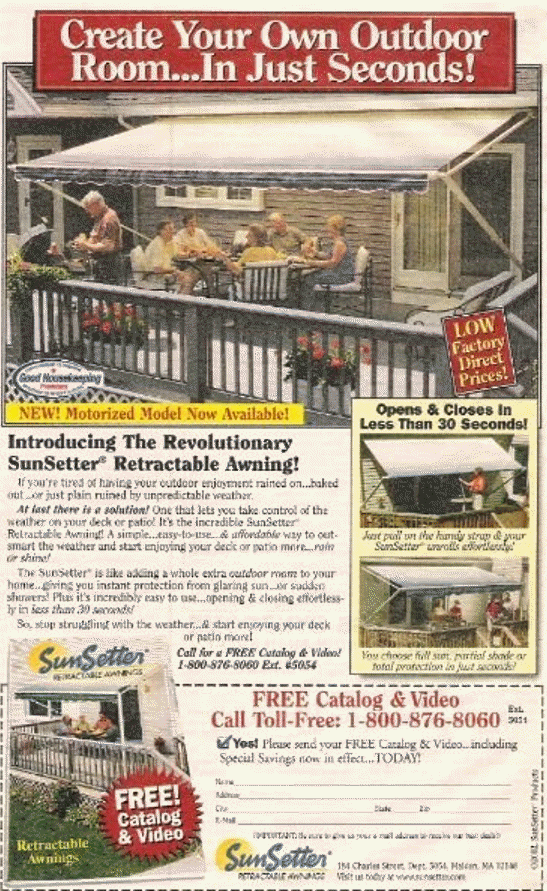Most of what you read and hear out there about fee resistance is dead wrong and grossly misguided. Arguing higher quality and better services isn’t going to cut it, particularly since you’re selling services that cannot be intrinsically compared to those of another competitor.

There are a LOT of ways to overcome fee resistance, from selecting better prospects, “doing the math” to demonstrate value to even using higher price as a reason TO buy. But one often overlooked strategy is to completely change the game, comparing apples to oranges to make what you sell look cheap.
One such example can be seen in this SunSetter ad. You’ll have to forgive me for the poor quality of the image and because I had a much better example of a different SunSetter ad but could not get my hands on it for love or money. Anyway, this is the closest I could find and it makes the same point – and that point is that SunSetter positions their awning as an outdoor room, not just an awning. The ad I could not find had this as a headline (reconstructed from my memory of it, which is not perfect but close) :
“Why spend $50,000 for an addition when for as little at $1,500 you can instantly create an outdoor room in seconds?”
This takes the focus away from price competition from a direct competitor to something entirely out of their category. Clearly you cannot rationally compare the cost of an awning to putting up a patio addition to your home, but prospects don’t make that connection, and the comparison works.
By the way, SunSetter is a fantastic direct response marketer that sells something that can be gotten at just about any Home Depot, Lowes or local awning supplier. They SHOULD be dealing with price competition, but they’re flat-out better marketers than anyone else in their category, making them the largest manufacturer of retractable awnings and shade products in the country and securing them 30% market share – an incredible feat.
Their ads focus on the END benefits (outsmart the weather, 20-degrees-cooler deck, great UV protection, transform your deck or patio into a vacation spot, etc.), not *just* on the materials, warranty, construction, quality, etc. All their ads are direct response as well, offering a free idea kit, a control they’ve been using for years. Lots to learn here.
Now, how do you use it? How about, “Why spend $150,000 on hiring a couple of IT people when for as little as $5,000 a month you can get a complete IT department without the hassle and cost?” With a little thought, I’m sure you can make an easy argument for why it’s cheaper to outsource than to try and do what you do in-house.



